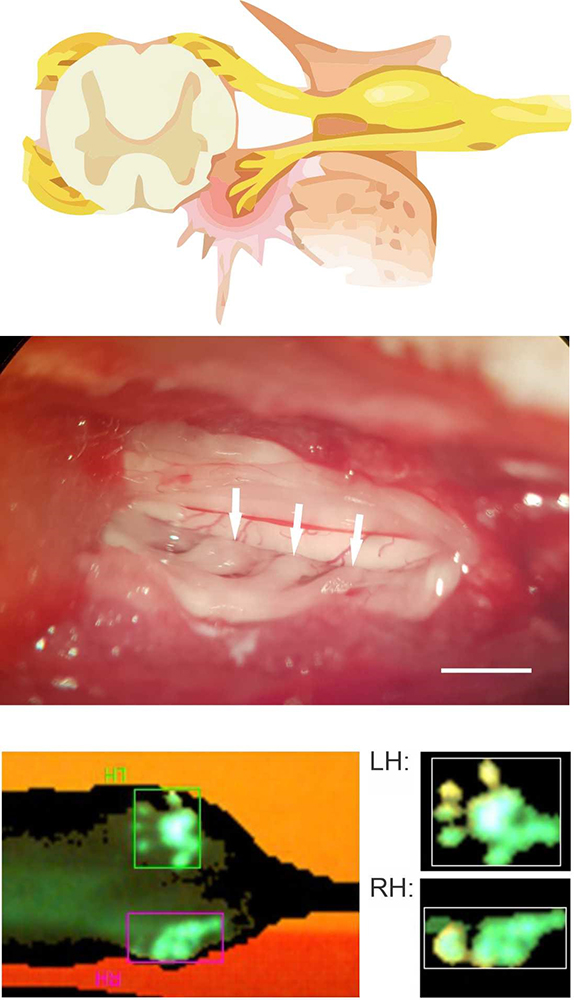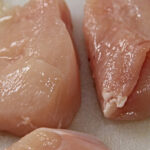By Paula Regina Gelinski Kempe, Ph.D. student in the Postgraduate Program in Cellular and Structural Biology and Alexandre Leite Rodrigues de Oliveira, Professor, Laboratory of Nerve Regeneration, Department of Structural and Functional Biology at University of Campinas (Unicamp), Campinas, SP, Brazil
Loss of movement in accidents often occurs due to damage to the spinal cord as well as in peripheral nerves, and full recovery is unlikely. These injuries are common in run overs, motorcycle and automobile accidents, falls, and diving into shallow waters. The symptoms resulting from spinal cord injury are due to motoneuron death and disconnection of the central nervous system with the target muscles, in addition to intense local inflammation, which generates severe pain.
Currently, surgical repair to such lesions is limited, and some pharmacological treatments are used to improve the prognosis and reducing neuropathic pain. Indeed, there are still no methods that provide rubust improvements both at the cellular and functional levels, leading to loss of quality of life for these individuals.
The Laboratory of Nerve Regeneration, at the Institute of Biology, University of Campinas (Unicamp), Brazil, investigates how different spinal cord injuries affect neuronal death and tissue inflammation. In this way, we seek to develop efficient therapeutic approaches that result in functional improvements. In the study “Neuroprotection and immunomodulation by dimethyl fumarate and a heterologous fibrin biopolymer after ventral root avulsion and reimplantation”, published in the Journal of Venomous Animals and Toxins including Tropical Diseases (vol. 26), the fibrin sealant, a biological glue derived from snake venom and buffalo blood was used as a surgical repair stategy. As a well established experimental model, avulsion is the root pullout at the interface between the spinal cord and the motor nerve root, which contributes to forming spinal nerves (in this case, the sciatic nerve). The fibrin biopolymer was developed by Brazilian researchers at the Center for the Study of Venoms and Venomous Animals (CEVAP/UNESP in Botucatu, SP) and presented cytoprotective and anti-inflammatory effects, aiding the repair of the lesion, without the need for sutures. In addition to the biological glue, dimethyl fumarate (DMF) was also used as pharmacological therapy. DMF is a drug already used to treat multiple sclerosis and psoriasis. It has cytoprotective and anti-inflammatory effects, in addition to antioxidant properties.
Figure 1. Scheme of the motor nerve root lesion and surgical repair with fibrin biopolymer (arrows). Functional recovery is achieved, measured by gait assessment. LH: normal paw; RH: paw under-recovery
The therapeutic combination of surgical repair with fibrin sealant and pharmacological treatment with DMF, three months after the injury, resulted in 70% survival of the affected motoneurons. There was a significant preservation of the contacts between such neurons (synapses) within the spinal cord, reduction of inflammation and recovery of up to 50% of the movements of the affected limb. Such results are promising and make us believe in a viable clinical application, improving the quality of life of patients with greater autonomy and productivity.
To read the article, access it
KEMPE, P.R.G., et al. Neuroprotection and immunomodulation by dimethyl fumarate and a heterologous fibrin biopolymer after ventral root avulsion and reimplantation. J. Venom. Anim. Toxins incl. Trop. Dis [online]. 2020, vol. 26, e20190093, ISSN: 1678-9199 [viewed 29 July 2020]. DOI: 10.1590/1678-9199-jvatitd-2019-0093. Available from: http://ref.scielo.org/tfhgdq
External links
Facebook – Journal of Venomous Animals and Toxins including Tropical Diseases <https://www.facebook.com/JVATiTD>
Journal of Venomous Animals and Toxins including Tropical Diseases <http://www.jvat.org/>
Journal of Venomous Animals and Toxins including Tropical Diseases – JVATITD <http://www.scielo.br/jvatitd>
Laboratório de Regeneração Nervosa: <https://www.facebook.com/Laborat%C3%B3rio-De-Regenera%C3%A7%C3%A3o-Nervosa-Unicamp-125818097548629>
Twitter – Journal of Venomous Animals and Toxins including Tropical Diseases <https://twitter.com/JVATiTD>
Como citar este post [ISO 690/2010]:




















Recent Comments